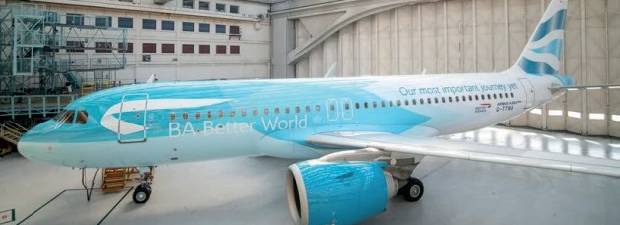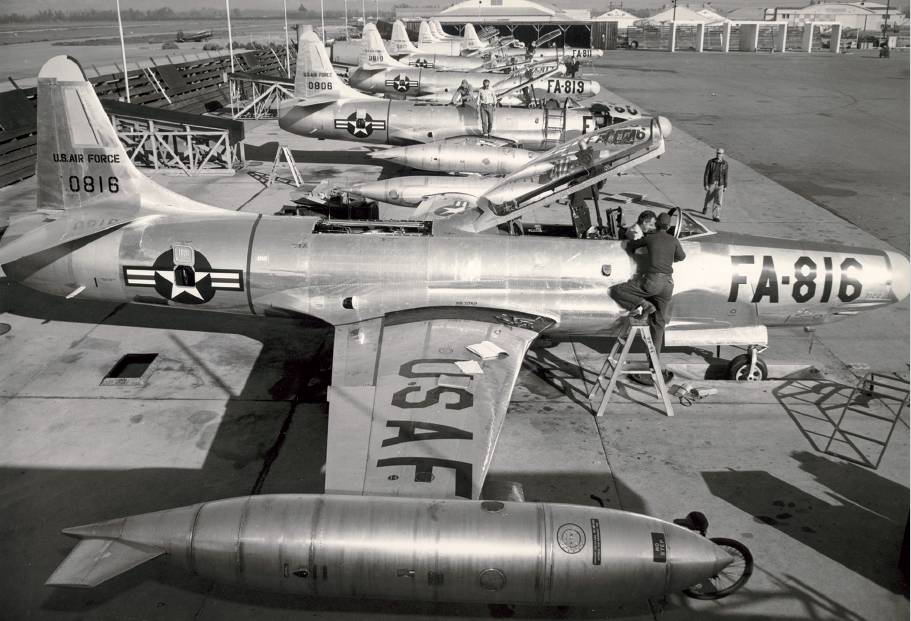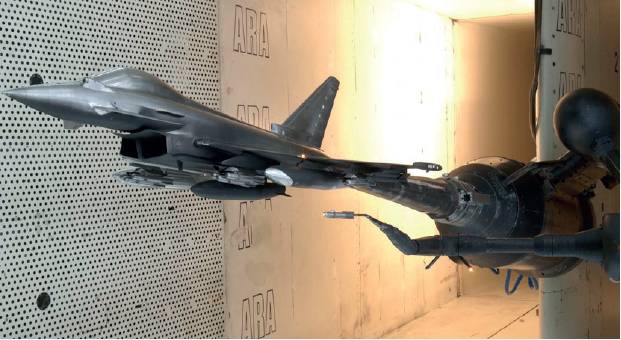Transmission
@aerosociety | www.aerosociety.com | LinkedIn | Facebook
Richard Aboulafi a’s article(1) in February’s edition provided an insightful reminder into the potential overheating of the fledgling Urban Air Mobility sector. Having been involved in this sector in various capacities, I agree with Richard’s view that a robust business case is far from proven.
However, stepping back from the underlying economics, I feel optimistic that the injection of money and fresh talent into aerospace can only be a good thing. Even in Richard’s worst-case scenario, the spin-offs from the application of new technologies and the upgrading of traffic management can only significantly benefit the existing aviation scene.
Without the injection of innovative ideas, backed by investment in the 80s and 90s, I do wonder what the IT sector landscape would have looked like today.
For this reason, I look forward with great optimism to the new era of innovation in aerospace.
Jim Gilhooly
Managing Director Jetstream Consulting Group
The ‘Pimp My Flight’ article in April 2022 AEROSPACE(4) did not address the safety aspects in the selection of custom airline liveries, specifically how it may affect a pilot’s see-and-avoid capability out-the-window of the cockpit.
When operating in congested airspace under visual meteorological conditions, an aircraft with a paint scheme designed to enhance its visual conspicuity provides a non-technological and economical mitigation for avoiding mid-air collisions (MAC). Hence aircraft paint colours/patterns should not be arbitrarily selected based solely on aesthetics or attractiveness for marketing.
 British Airways
British Airways
There has been an abundance of research that has analysed the air-to-air visual acquisition range of aircraft with different paint colours/patterns under a variety of atmospheric conditions.
For military and law enforcement aircraft the extant literature has focused on those paint colours/patterns that camouflage an aircraft, hence should be avoided in civil air carrier aircraft. In contrast, for civil aircraft, public service aircraft (eg Coast Guard) and military training aircraft the research objectives have been to identify what makes them more visually compelling to a pilot who is relying on unaided natural vision out-the-window of the cockpit to comply with see-and-avoid regulatory requirements.
The findings in the historical literature indicate that to increase visual conspicuity fluorescent colours should be used instead of enamels or unpainted metallic surfaces, specifically fluorescent red-orange and fluorescent yellow-orange, covering large sections of the aircraft.
Furthermore, the use of a paint scheme of a black bottom contrasting with a mostly white top was found to be more visually compelling. Surprisingly, many of the aircraft pictured in the ‘Pimp My Flight’ article did not appear to fully embrace safety-enhancing colour schemes, which in some cases were more akin to camouflage!
Dr Robert Joslin
FRAeS Associate Professor Embry-Riddle Aeronautical University
@flyhellas [On Boeing testing its F-18E on a ski-jump for the Indian Navy] If it was an angled deck, yes. But with the current layout, no. A missed hook would likely see it impact the ski jump.
@juanmab Why? Do they really need to cross-deck something more besides F-35s?
@RyanBrewis2571 So that’ll be AG+cats for UAV. At that point we have a CATOBAR carrier with added complexity. @edwardavies Adding arrestor gear to QEs is not a simple thing. Takes a lot of space to integrate something like that on a ship.
@AlcockNews [On Around the world in 22 years(2) ] These must be the End Times. Plagues, locusts to follow. Happy retirement, Bill.
@Terry_Spruce OMG Bill retiring, best wishes mate.
@BenSharpUK Enjoyed Richard Lowe’s @AeroSociety Aerospace article ‘New Age of Astronauts’(3). Beyond tourists and Moon/Mars missions though, perhaps it will be pioneering miners and privateers seeking riches that really push humans into space?
Ruth Louise Mallors-Ray This is about the sector from 2019 to 2020, the impact of Covid is yet to be determined.

On 6 April, Navy Wings held an event to celebrate the addition of the last flying Supermarine Seafire XVII to its fleet, ahead of this year’s display season. The aircraft was purchased by Navy Wings in November 2021 and is expected to participate in the 2022 display season, beginning with the opening Shuttleworth Collection display at Old Warden on 1 May 2022. (picture Ron Smith)
Dr Ron Smith
FRAeS

A line-up of Lockheed F-94B-1-LO Starfires. The F-94 was an interim all-weather fighter produced from the T-33 trainer to fill the gap left by the delayed Northrop F-89 programme. 854 aircraft were built in three versions and they saw service with the USAF and Air National Guard from 1950 to 1959. (RAeS/NAL)
Along with many other businesses, the Aircraft Research Association (ARA) is having to adapt to an era of much higher energy costs. However, aspects of the changes, and especially the way in which the charges are being calculated, puts at risk one of the longest-standing names in the UK aerospace sector.
Founded in 1952, ARA is a non-profit distributing engineering research organisation located in Bedford. As well as providing advanced aerodynamics services to international customers, ARA remains a key capability for UK civil aerospace and defence. Our work is pivotal to many aerospace initiatives and the ARA is a key partner in both the Tempest FCAS project, as well as the greening of civil aerospace as we move towards net zero.
ARA’s main wind tunnel involves pushing 19t of air around a closed loop at over 1,000mph, and in doing so uses approximately 15 gigawatt-hours of electricity per year but, due to the nature of testing, the usage is far from uniform and peak usage can reach 32MW but often only for hours or even minutes.
The energy supplier’s need for a smooth demand has previously resulted in a billing system, the so-called ‘Triad’ charges, whereby a substantial premium is charged for usage during certain periods. Some customers could avoid energy consumption at these times and hence avoid the charges and so the suppliers are now changing to a system based on peak usage capacity. Recently, and without any consumer involvement or consultation process, the regulator OFGEM informed ARA that we would be charged under a structure involving a series of standing charges based on peak capability and not usage.
 ARA finds itself in the iniquitous situation of having been placed in the highest charge band, alongside steelworks and car manufacturing sites. This is based on our capability to draw high powers despite these uses being of short duration and infrequent – representing only around 1% of the time. The effect on ARA of this change will be that the standing charge amount will increase from around £6,000 pa to well over £1m pa – a 16,000% (ie a 160-fold) increase which it will have to try and absorb alongside soaring unit prices for power.
ARA finds itself in the iniquitous situation of having been placed in the highest charge band, alongside steelworks and car manufacturing sites. This is based on our capability to draw high powers despite these uses being of short duration and infrequent – representing only around 1% of the time. The effect on ARA of this change will be that the standing charge amount will increase from around £6,000 pa to well over £1m pa – a 16,000% (ie a 160-fold) increase which it will have to try and absorb alongside soaring unit prices for power.
Lobbying for an exemption has been unsuccessful to date and, despite the efforts of three local MPs, the government’s support has been limited to a suggestion from Greg Hands, Energy Minister, in December 2021 that “the ARA will ultimately need to look to pass through costs to its customer.” Although aware of this approach, ARA’s evidence suggests that in most cases these charges cannot be passed onto customers as worldwide competitors who have significant government funding and more equitable structures for their power charges can maintain significantly lower costs.
This is at a time when new methods of propulsion and experimental configurations for civil aircraft will certainly require wind tunnel testing. Countries, such as China and Turkey investing very heavily in comparable facilities, despite the rise in capability of CFD and digital analysis, clearly makes this point. This situation results in a unique UK capability being at severe risk despite the backdrop of several statements from the government promising support for cases such as ARA’s. These include Boris Johnson stating in the 2021 Integrated Review of Security, Defence, Development and Foreign Policy that… “Our first goal is to grow the UK’s science and technology power in pursuit of strategic advantage”, the Defence Secretary stating... “It is vital that we protect those technologies that will provide us with a decisive edge” and concurrently Jeremy Quin MP, Defence Minister stating that: “In a move away from the policy of ‘global competition by default’, we will adopt a more strategic and nuanced approach …to ensure home-grown skills, enterprise and intellectual talents are fully harnessed.”
Currently, there is no mechanism by which a company, such as ARA, can be considered by the electrical suppliers as a special case and OFGEM has stated that it is not minded to exempt. Thus, it appears that only through government intervention can the issue be resolved.
I am now calling for the positive words spoken by the government about the importance of UK capabilities to be translated into action and for this key strategic capability to be safeguarded by introduction of a process by which special cases, such as ARA, can be reconsidered and a more equitable charge levied.
Paul Hutchings
Chief Executive Officer, Aircraft Research Association Limited
---
1. AEROSPACE, February 2022, ‘The EVTOL bubble?’
2. https://www.aerosociety.com/news/around-the-world-in-22-years/
3. AEROSPACE, April 2022, ‘The new age of astronauts’’
4. AEROSPACE, April 2022, ‘Pimp my flight’.’’
5. https://www.aerosociety.com/news/seafire-back-in-the-air//

